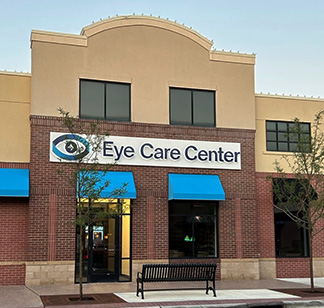
Astigmatism is a very common vision condition, yet many people don’t realize they have it. It occurs when the front surface of the eye (the cornea) or the lens inside the eye has an irregular shape. Instead of being perfectly round like a basketball, the eye is shaped more like a football, causing light to focus unevenly. This leads to blurry or distorted vision at all distances. Understanding the condition and how it’s diagnosed can help you get the clear, comfortable vision you deserve.
What Causes Astigmatism?
Astigmatism can be present at birth or develop over time. Most cases are due to natural variations in eye shape. Other potential causes include:
• Eye injuries
• Previous eye surgery
• Keratoconus, a condition that thins and reshapes the cornea
Astigmatism often occurs alongside nearsightedness or farsightedness, creating a combination refractive error that can further impact your clarity of vision.
Common Symptoms of Astigmatism
If you’re experiencing any of the following symptoms, astigmatism may be the reason:
• Blurry or distorted vision
• Difficulty seeing clearly at night
• Eye strain or fatigue
• Frequent headaches
• Squinting to see better
Because these symptoms can overlap with other eye conditions, a comprehensive eye exam is essential for an accurate diagnosis.
How Is Astigmatism Diagnosed?
Diagnosing astigmatism is straightforward and painless. During a comprehensive eye exam, your eye doctor will use several tests to check how your eyes focus light and to map the shape of your cornea.
• Refraction Test: This is the familiar test where your doctor asks, “Which is clearer: 1 or 2?” It helps determine your precise prescription and whether astigmatism is present.
• Keratometry: This tool measures the curvature of your cornea. A keratometer shines a light onto your eye and evaluates its reflection, giving your doctor vital information about corneal shape.
• Corneal Topography: For a more detailed assessment, corneal topography creates a full map of the cornea’s surface. It can detect even subtle irregularities and is especially helpful when evaluating patients for specialty contact lenses or eye surgery.
• Autorefractor Measurements: Many exams begin with an autorefractor, which provides an initial measurement of your refractive error, including astigmatism.
Together, these tests allow your eye doctor to understand how your eyes are functioning and recommend the right treatment.
How Astigmatism Is Treated
Once diagnosed, astigmatism can be corrected in several effective ways:
• Eyeglasses with special lenses to counteract corneal irregularities
• Soft toric contact lenses designed specifically for astigmatism
• Rigid gas-permeable (RGP) or scleral lenses for patients with more advanced or irregular corneal shapes
• Refractive surgery, such as LASIK, for eligible candidates
Your doctor will help you choose the best option based on your prescription, lifestyle, and eye health.
Find Out if Astigmatism Is Affecting Your Vision
Astigmatism is incredibly common and easily treatable once diagnosed. If you’re noticing blurred vision, headaches, or difficulty focusing at certain distances, a comprehensive eye exam can provide clarity. With the right diagnosis and treatment, you can enjoy crisp, comfortable vision every day.
If you suspect you may have astigmatism, schedule a comprehensive eye exam at Eye Care Center for personalized treatment options. Visit our offices are in Fridley, Maplewood, and Maple Grove, Minnesota. Call (763) 308-8440, (651) 777-3555, or (763) 420-6981 to book an appointment today.

















